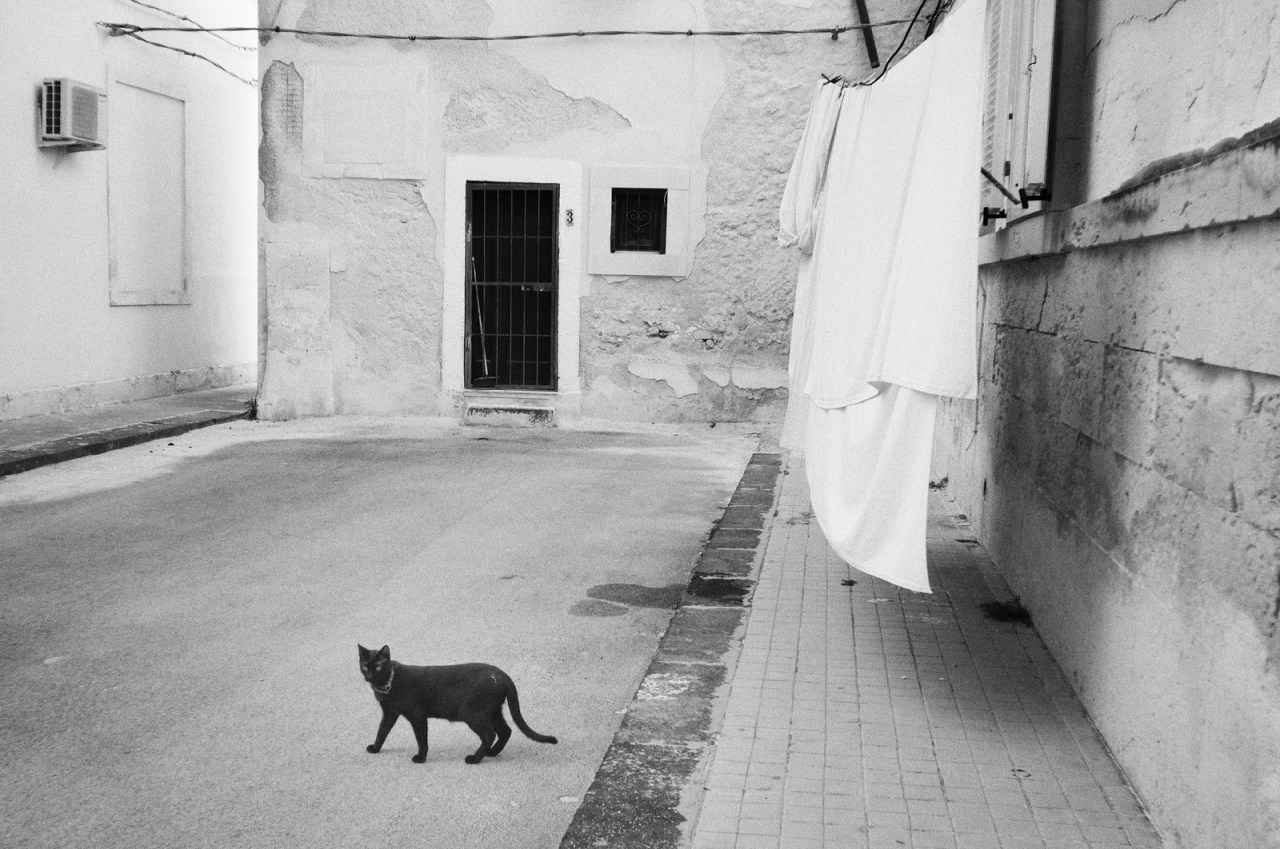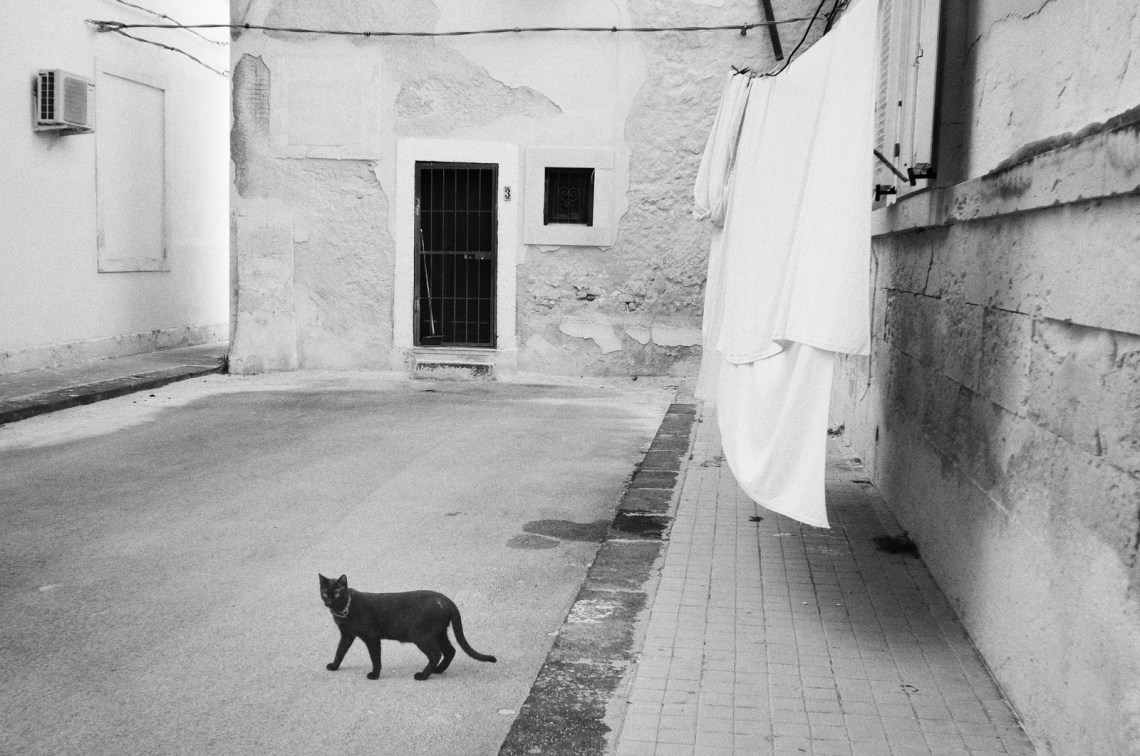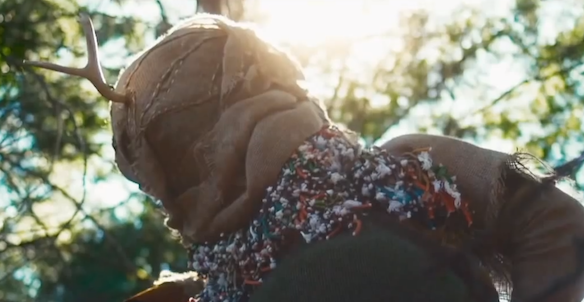Parking Among The Corpses Of Syracuse’s Dead Frescoes
This graf I see is the death of graf. It no longer moves. It is no longer moving. Stationary frescoes. Crippled trains. This graf stares back like the eyes of corpses in the catacombs dei cappuccini. For what is a parking garage, after all, but a mausoleum?


After driving from Palermo to Syracuse, I still need to park the car. Good luck! Drive along the perimeter of the island and slip into the carapace of stone. Carry your bag of coins. 20 euros. No credit cards.
In the fifth century, Aeschylus’ Oresteia was performed nearby. He died in Gela, far from Athens, having worked briefly for a tyrant named Hiero I, restaging The Women of Aetna and the Persians. Pliny records that Aeschylus lived in fear of a prophecy saying he would be killed by a falling object. In the end, Aeschylus was killed outside the city by a tortoise dropped by an eagle which had mistaken his head for a rock suitable for shattering the shell of the reptile. Which brings us to our parking garage, connecting Syracuse with Ortygia. A wonderful place for a tourist to hide.
The tourist side of Ortygia is graf-free for those who come to honor Aeschylus. Yet one keeps returning to the parking garage, murals splattered on walls, if only to watch the parking meters every 24 hours. Graf screams another language. Not Italian, not Greek. It resembles nothing so much as blood.
One mural artist quotes Dali. Another, Picasso. A third simply scrawls a pair of glasses. Who’s looking at whom? The walls see. Headless eyeglasses stare back. Each section of the parking garage is divided up by a graf gang; each crew randomly choosing their own space. Honor among vandals, as Henry Chalfant wrote in “Subway Art.” It is something Michelangelo might have envisioned had he come to Sicily instead of Rome. Had he been a bit lazier. Without an artistic director, chaos flourishes in Ortygia’s parking garage, but so does talent, unmitigated by nepotism. Democracy—a great trial by jury. Sometimes a palimpsest; sometimes a solo exhibition.
On the floor, in front of the frescoes that line the parking garage, with plastic bottles and detritus, lurks a homeless man and his dog. They sleep under the most brilliant graf of all. “Strawberry Fields forever,” it says. I give 2 euros, about to lay it on a cloth, as if leaving alms at a baroque cathedral to light a candle in this overheated darkness. I pay as much to use a bathroom, and besides, I’ve already annoyed him. Photographed the frescoes, complete with flash bursts. And yet it must be done. The walls cry out for remembrance. “You come for beauty? I’ll show you beauty,” they say. Unscripted. Unpatronized. Unloved.
Who will claim this isthmus? Where will the pain of the city go? Whose art could be more vibrant, swelling fat with neglect? Will anyone bother to read neon signs of discontent, despair, or self-assertion? A triumph of life. Ortygia is swimming with it. Dizzying, perhaps. What do visitors think as they fumble for correct change?
Graf has always inhabited the lower frequencies of culture: the ultimate background, it is now foreground, a presage of things to come. Revolution.
In “Copenhagen”, alleys of graf speak a contrapuntal language, an American signifier in a foreign film; in “Lemonade”, Beyonce swirls around. “Bitch what?” she asks her imaginary opponent (is she in her head?) as the camera ogles her. She darts between rectangles of cement, defaced with electric acid graf. In “Purge: Election Year,” graf is scrawled on the neoclassical pillars of the Lincoln memorial. P-U-R-G-E drips with blood, as if painted by a “toy”, complete with incompetent dripping letters, a graf artist’s badge of shame. One thing everyone knows about graf is that you’re not supposed to let the letters drip. That’s the sign of an amateur! In “Purge: Election Year,” assassination is the other side of democracy. P-U-R-G-E. Like Beyonce, mute with rage; beyond words; Graf is a blessing curse. Imprecations. Maniacal power. “It is f–ing energy, man” as one practitioner put it in a film by Chalfant. Demonaic, manic, half crazed. Daimon. This parking garage is the ancient amphitheatre of graffiti. The hiss of the spray can. The opposite of a novel or poem. Unconsidered. Ill-considered. Untutored. Caliban, learning to curse, without profit to anyone. Put him in the debit column of life. The graf artist in society. Vandalism! History’s rough draft. It is the perfect fusion of name illustration, and self-assertion. And all of this just down the road from a Greek amphitheatre, where Aeschylus’ Persians is regularly performed. Graf, by contrast, is created by those who hedge against time. They don’t trust it. Apocalypse now. They are certain that this may be their last day on earth, and if they find no publisher, well then, by God, they have found this wall. That should be enough. How long will it last? Longer than a best-seller? A week; two years? No matter. The NYC subway trains were a museum on wheels, read by more people than most novels. Those trains are now replaced by ghosts of greed. Lawyers’ ads. Are we better off?
One might hazard the following:
The power of Graf flourishes in inverse proportion to the governments that s erase it.
The theatre in Syracuse is almost too hot to visit in summer, let alone photograph. Gleaming white. No graf there, I note, before returning to my hotel, a good ten minutes walk. Patient eloquence, written by a warrior.
Graf captures America’s missing soul. Transplanted and copied, this native NY art form has traveled the world, with the last subway train wiped out by a proud mayor, Ed Koch, who hailed from law-abiding Queens. He famously used wolves to scare off graf artists, those 14-year-old hoodlums who had no after-school art programs. Policemen boasted of shoving magic markers down their throat when they could catch these “taggers” with Greek immigrant names like Taki 183. Thataboy! That will teach ‘em. “Boy the way Glen Miller played, songs that made the hit parade.” Graf became a felony. Problem solved. 1984. A decade later, Koch’s fellow-traveller, Rudolph Guiliani, decried Robert Mapplethorpe; and then again in 2016, he shared his misreading of Beyonce’s half-time show with CNN viewers, eloquent in his philistinism. He should have known better, hailing from Italy, that Paradise of Exiles. Ravenna and Padua, hoarder, creator of frescoes. Graffito is Italian, Sicilian even.
In the United States, we have our own martyrs. Richard Nixon’s name appears in tags in NYC in the 1970s, coloring the work of Keith Haring. John Lindsay’s New York City. Graf is always a protest vote. Music of the invisible. A scream on a wall rendered elegant by Bronx artists, copied by Madison avenue. “Wild style.” “We give the letter,” as one man explains, “and then we take it away.” “We are not asking permission,” another says. “We are taking the space.” “Writers” (that is what they call themselves, not graf artists) is inseparable from crime. That is the thrill. Take the space. Theft.
Here it is, a humble parking garage in Ortygia. A moneymaker. Shake your moneymaker. I have now parked my car, rented from Avis in Palermo, on a street known for prostitution. In Ortygia, 4.5 hours away, tourists are charged 20 euros a day to park their cars. The fees are used, no doubt, to erase graffiti from the beautiful white walls of this very parking garage, in a city that attracts tourists for its baroque cathedrals. They are right to wipe out the graf! Keep the city clean! Honor the past! Punish the vandals. The parking meter measures time; it is the enemy of the parking fresco, and yet they need each other. Marriage of heaven and hell. Eternity is in love with the productions of time.
Still, graf is frozen in the parking garage. This graf I see is the death of graf. It no longer moves. It is no longer moving. Stationary frescoes. Crippled trains. This graf stares back like the eyes of corpses in the catacombs dei cappuccini. For what is a parking garage, after all, but a mausoleum? Gasoline. Exhaust. Temporary burial ground for automobiles. Expensive signifier that stinks of pollution. P. P-ew. No wonder Quentin Compson hated his automobile. Purveyor of death and pollution. Carbon MONOxide. A tale told by an idiot. It is the warmest place in the city, this parking garage, because it is the most human. That is why the blonde homeless man whose name I will never know has chosen to sleep here with his dog. It is shameful to be poor. That is why I look away as I put 2 euros in his dirty hand. I hope I will not be infected by his bad luck, even as I try to help. He has been watching me the whole time; I’d like to ask him to stand aside so I can take my picture of the wall behind him, but that would be obscene. It is not possible. Stubbornly, he remains. He comes with the place. He will not be photographed in front of a mural called Strawberry Fields, but he will not be removed. He likes the warm silent thrusting of the electric pulse of grief. And who can blame him? He resides in the most artistic place of the city. A docent in this palace of art, as entitled to my two euros as the Mayor of Ortygia. He likes the music of silence. This graf. This beauty. He is a curator of dirt, of the unremembered and despised.
“Overheated?” my girlfriend asks when I return to our 4-star hotel. Stupefied is more like it. From the subways of New York to the baroque cathedrals of Ortygia, to Aeschylus’ Oresteia, is but a short trip after all.


